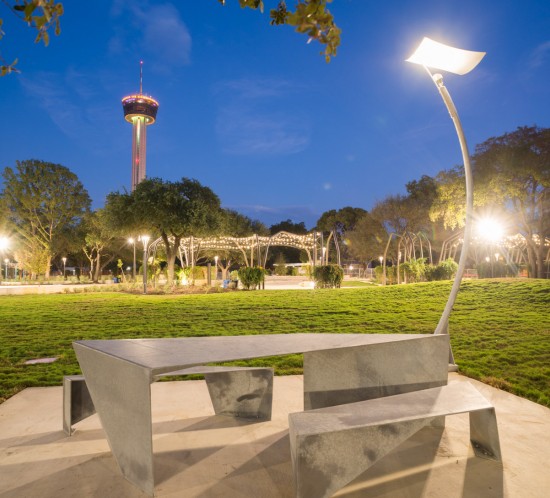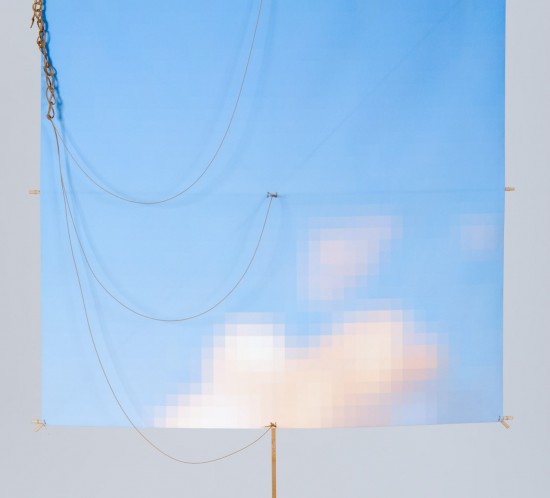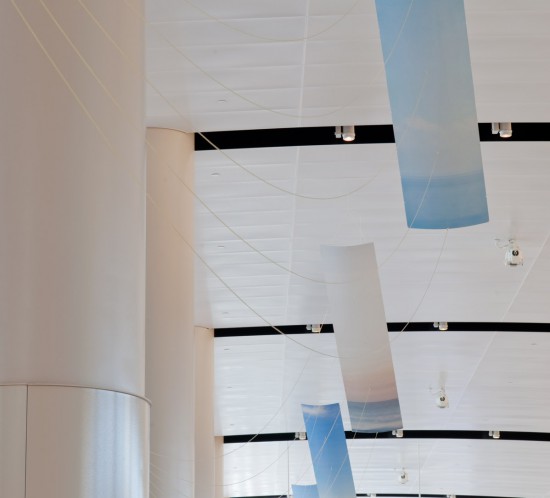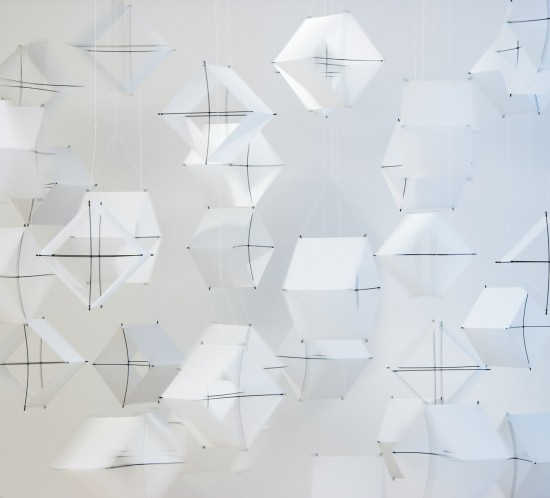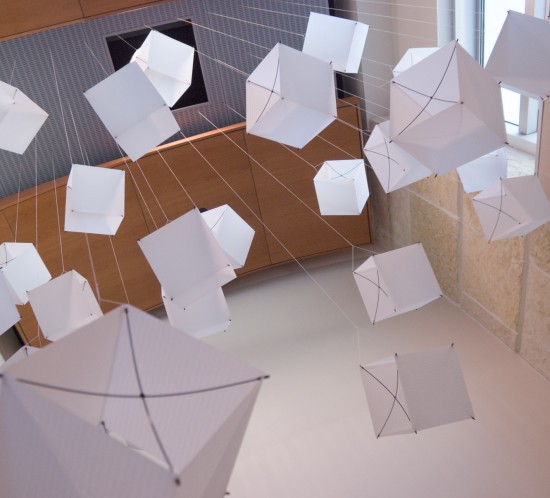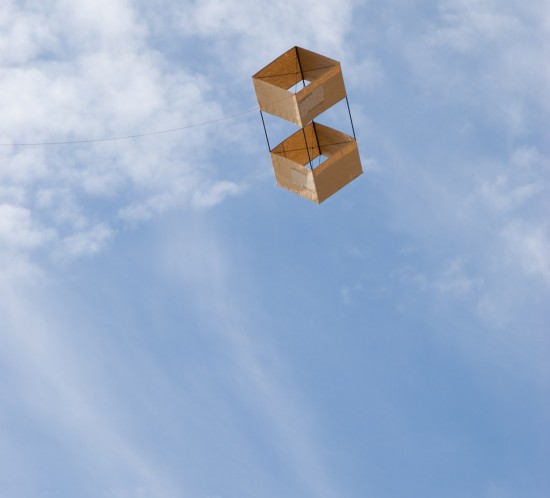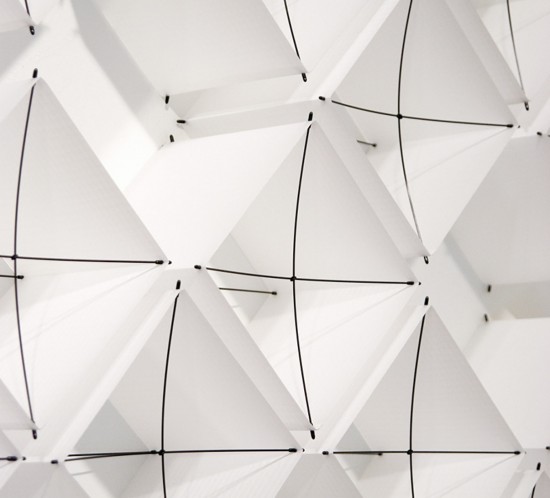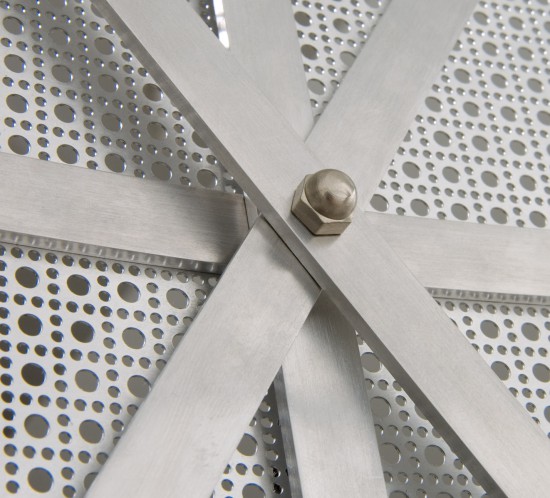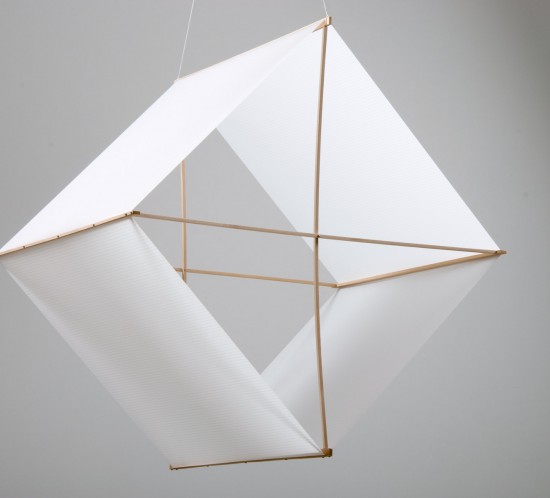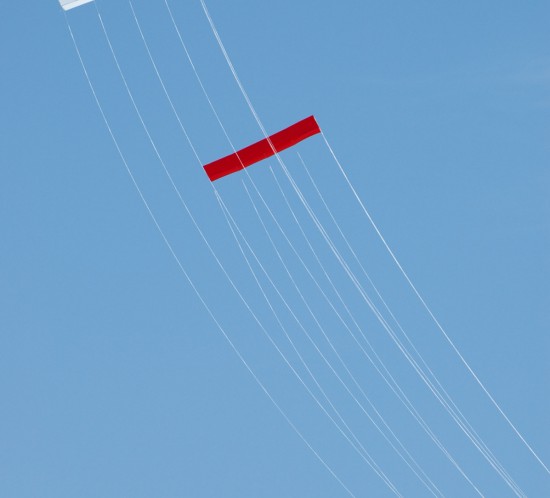Kite Table
Kite Table, 2015
galvanized steel, powder coated steel
table: 10′ x 6′ x 32″
light fixture: 15′ x 6′ x 18″
Permanent installation: Hemisfair Park, San Antonio, TX
The Kite Table is a platform for gathering and a cross-cultural reference point. The form is derived from folded paper, but fabricated with plate steel. The table top is an abstracted reference to a diamond kite, the most recognizable of western kite shapes. Etched onto the surface of the table are diagrams for making kites from four different countries: Japan, Korea, Guatemala and the United States – all countries that had a presence during the HemisFair ’68 World’s Fair. In addition to the diagram, a web address is etched into the surface where visitors can find additional information about the construction and cultural significance of each kite style. Standing next to the table is a custom light fixture that references a kite in flight.
The kite-making instructions on the table’s surface are explicit, but the primary intent is to inspire individuals and families to engage in a fulfilling outdoor activity. In this sense, the table is a conceptual object, suggesting the potential of open public space coupled with imagination.
For more information about the Kite Table: CLICK HERE
Collection of the City of San Antonio, commissioned through Public Art San Antonio.

